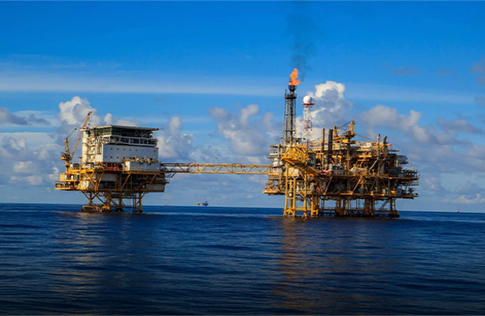-
Cangzhou Yulong Steel Co., Ltd.
-
Phone:
+86 13303177267 -
Email:
admin@ylsteelfittings.com
- English
- Arabic
- Italian
- Spanish
- Portuguese
- German
- kazakh
- Persian
- Greek
- French
- Russian
- Polish
- Thai
- Indonesian
- Vietnamese
- Zulu
- Korean
- Uzbek
- Hindi
- Serbian
- Malay
- Ukrainian
- Gujarati
- Haitian Creole
- hausa
- hawaiian
- Hebrew
- Miao
- Hungarian
- Icelandic
- igbo
- irish
- Japanese
- Javanese
- Kannada
- Khmer
- Rwandese
- Afrikaans
- Albanian
- Amharic
- Armenian
- Azerbaijani
- Basque
- Belarusian
- Bengali
- Bosnian
- Bulgarian
- Catalan
- Cebuano
- China
- China (Taiwan)
- Corsican
- Croatian
- Czech
- Danish
- Esperanto
- Estonian
- Finnish
- Frisian
- Galician
- Georgian
- Kurdish
- Kyrgyz
- Lao
- Latin
- Latvian
- Lithuanian
- Luxembourgish
- Macedonian
- Malgashi
- Malayalam
- Maltese
- Maori
- Marathi
- Mongolian
- Myanmar
- Nepali
- Norwegian
- Norwegian
- Occitan
- Pashto
- Dutch
- Punjabi
- Romanian
- Samoan
- Scottish Gaelic
- Sesotho
- Shona
- Sindhi
- Sinhala
- Slovak
- Slovenian
- Somali
- Sundanese
- Swahili
- Swedish
- Tagalog
- Tajik
- Tamil
- Tatar
- Telugu
- Turkish
- Turkmen
- Urdu
- Uighur
- Welsh
- Bantu
- Yiddish
- Yoruba

Sep . 24, 2024 23:24 Back to list
Standards and Specifications for Flanges in Pressure Vessels and Piping Systems
The European Standard EN 1092, titled Flanges and their joints - Circular flanges for pipes, valves, fittings, and accessories, plays a pivotal role in ensuring interoperability and safety within industrial piping systems. Established by the European Committee for Standardization (CEN), this standard outlines the specifications for circular flanges, which are essential components in piping systems used in various sectors, including oil and gas, water supply, and chemical processing.
Flanges are mechanical components that facilitate connections between different sections of piping or between pipes and equipment. The primary purpose of EN 1092 is to provide a consistent framework that manufacturers, engineers, and contractors can rely on for the design and production of flanges. This standard categorizes flanges based on various factors such as size, pressure rating, and type of material, ensuring that they can be effectively integrated into different systems without compromising integrity or performance.
.
EN 1092 also addresses the various types of flanges, including slip-on, weld neck, blind, and threaded flanges, each designed for specific applications and pressure conditions. The standard provides detailed guidelines on the appropriate use of these different types, ensuring that engineers can choose the most suitable flange for their particular project. The section dedicated to pressure-temperature ratings further assists in selecting the correct materials and designs that can withstand the operational stresses encountered in various environments.
en1092

Additionally, the standard emphasizes the importance of materials used in flange manufacturing. It outlines the requirements for different materials, such as carbon steel, stainless steel, and special alloys, providing critical information about their mechanical properties and resistance to corrosion. This is particularly relevant in industries where flanges must endure harsh conditions, such as high temperatures and aggressive chemical environments.
To ensure safety and reliability, EN 1092 also incorporates guidelines for testing and quality assurance. Manufacturers are encouraged to implement rigorous quality control measures during production, including dimensional inspections and material certifications. This commitment to quality helps prevent failures in the field, safeguarding both personnel and equipment.
In conclusion, EN 1092 serves as an essential framework that enhances the safety, reliability, and efficiency of piping systems across various industrial applications. By standardizing flange dimensions, types, and materials, it ensures that professionals can make informed decisions when designing, installing, and maintaining piping systems. As industries continue to evolve, standards like EN 1092 will remain crucial in promoting best practices and advancing safety measures in engineering and construction.
Latest news
-
ANSI 150P SS304 SO FLANGE
NewsFeb.14,2025
-
ASTM A333GR6 STEEL PIPE
NewsJan.20,2025
-
ANSI B16.5 WELDING NECK FLANGE
NewsJan.15,2026
-
ANSI B16.5 SLIP-ON FLANGE
NewsApr.19,2024
-
SABS 1123 FLANGE
NewsJan.15,2025
-
DIN86044 PLATE FLANGE
NewsApr.19,2024
-
DIN2527 BLIND FLANGE
NewsApr.12,2024
-
JIS B2311 Butt-Welding Fittings LR/SR 45°/90° /180°Seamless/Weld
NewsApr.23,2024











